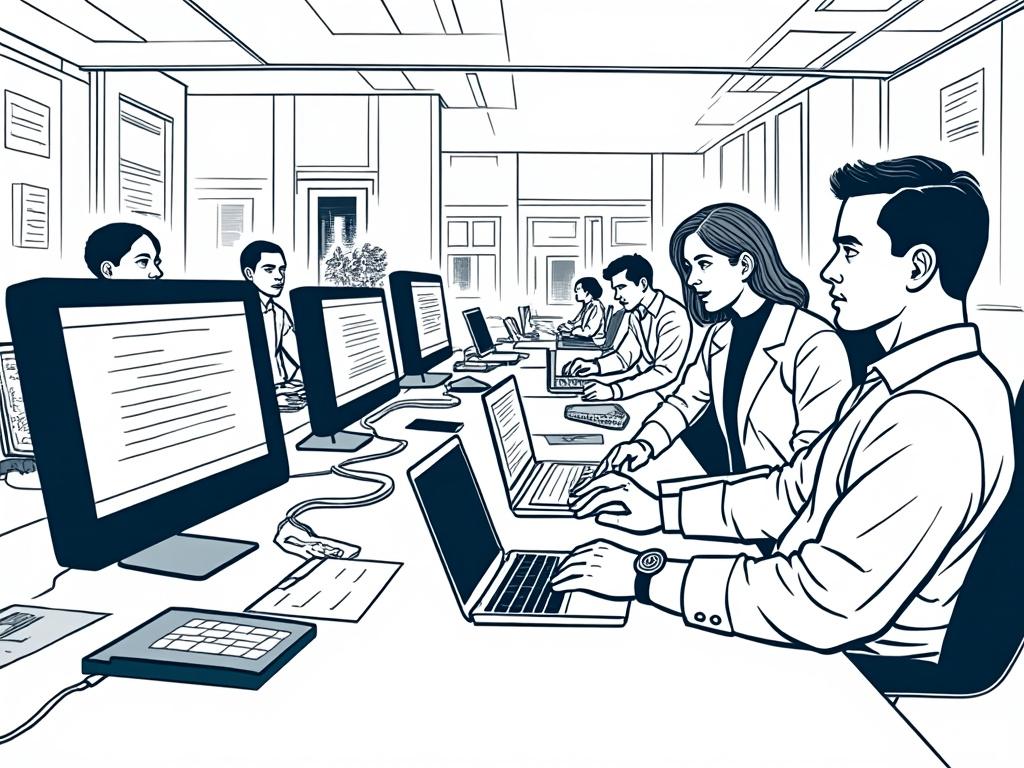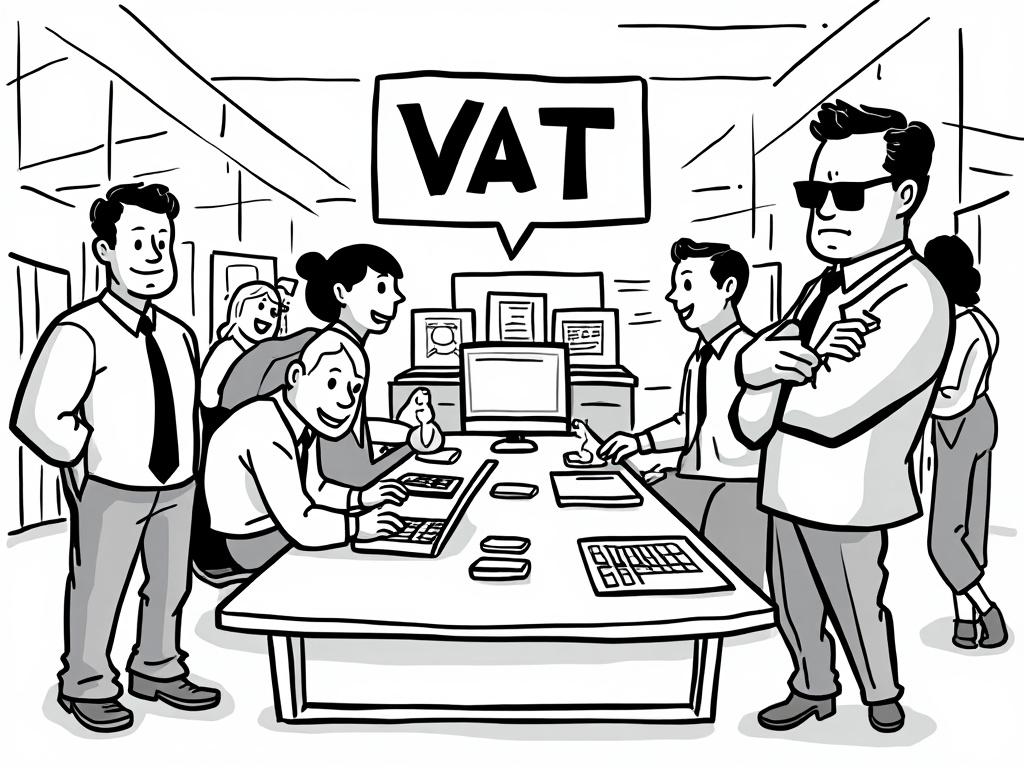
Educational Technology Revolution in Greece: From Ancient Learning to Digital Classrooms
Reading time: 8 minutes
Table of Contents
- Current EdTech Landscape in Greece
- Government Initiatives and Digital Education Strategy
- Implementation Challenges and Solutions
- Success Stories and Case Studies
- Technology Infrastructure and Investment
- Future Outlook and Opportunities
- Frequently Asked Questions
Ever wondered how a country steeped in ancient educational traditions navigates the digital revolution? Greece’s journey into educational technology adoption presents a fascinating case study of transformation, challenges, and unexpected opportunities.
The birthplace of democracy and philosophy now finds itself reimagining education through screens, interactive whiteboards, and cloud-based learning platforms. But here’s the twist: this isn’t just about replacing textbooks with tablets—it’s about fundamentally reshaping how Greek students learn, teachers teach, and institutions operate.
Current EdTech Landscape in Greece
Greece’s educational technology adoption has accelerated dramatically, particularly following the COVID-19 pandemic. As of 2024, approximately 78% of Greek schools have integrated some form of digital learning tools, representing a 340% increase from pre-pandemic levels in 2019.
Digital Infrastructure Overview
The foundation of Greece’s EdTech revolution rests on improved digital infrastructure. The government’s ambitious “Digital Greece 2025” initiative has prioritized educational connectivity, resulting in:
- High-speed internet access in 85% of public schools nationwide
- Interactive whiteboard deployment in over 12,000 classrooms
- Student device programs providing tablets to 250,000+ students
- Teacher training programs reaching 45,000 educators annually
Key Technology Platforms
Greek educational institutions have embraced various digital platforms, with Microsoft Teams for Education and Google Classroom leading adoption rates. The Ministry of Education’s proprietary platform, “e-me,” serves as the primary digital hub for administrative functions and student information management.
EdTech Adoption Comparison by Education Level
65%
82%
94%
71%
Government Initiatives and Digital Education Strategy
Greece’s commitment to educational technology runs deep, backed by substantial government investment and strategic planning. The Ministry of Education, Research and Religious Affairs has allocated €890 million through 2027 for digital transformation initiatives.
National Digital Education Program
Launched in 2021, this comprehensive program focuses on three core pillars:
- Infrastructure Development: Ensuring reliable internet connectivity and modern hardware in all educational institutions
- Pedagogical Innovation: Training teachers in digital methodologies and curriculum integration
- Student Digital Literacy: Developing critical thinking skills for the digital age
As Education Minister Niki Kerameus stated in 2023: “We’re not just digitizing education; we’re preparing Greek students for a future where digital fluency is as fundamental as traditional literacy.”
EU Funding and Partnerships
Greece has successfully leveraged European Union funding programs, securing €340 million through the Digital Europe Programme. This partnership has enabled accelerated implementation of cutting-edge educational technologies across the country.
| Initiative | Budget (€ millions) | Timeline | Beneficiaries |
|---|---|---|---|
| Digital Classroom Project | €425 | 2021-2025 | 8,500 schools |
| Teacher Training Program | €180 | 2022-2026 | 75,000 educators |
| Student Device Initiative | €285 | 2023-2027 | 400,000 students |
| Digital Curriculum Development | €95 | 2024-2028 | All grade levels |
Implementation Challenges and Solutions
Despite significant progress, Greece faces unique challenges in EdTech adoption. Understanding these obstacles—and the innovative solutions being deployed—offers valuable insights for other nations navigating similar transformations.
Challenge 1: Geographic Disparities
Greece’s mountainous terrain and scattered islands create connectivity challenges. Rural and island schools often struggle with inconsistent internet access, limiting their ability to fully embrace digital learning tools.
Solution in Action: The “Connected Islands” initiative uses satellite technology and mobile connectivity solutions to ensure remote schools maintain reliable internet access. This program has successfully connected 95% of island schools to high-speed internet by 2024.
Challenge 2: Teacher Resistance and Training Gaps
Veteran educators, particularly those nearing retirement, sometimes resist adopting new technologies. A 2023 survey revealed that 32% of teachers aged 50+ expressed concerns about integrating digital tools into their teaching methods.
Practical Solutions:
- Peer Mentoring Programs: Pairing tech-savvy younger teachers with experienced educators
- Gradual Integration Approach: Introducing one new tool per semester rather than overwhelming teachers
- Incentive Programs: Offering professional development credits and recognition for digital skill acquisition
Challenge 3: Digital Divide and Socioeconomic Barriers
Not all students have equal access to technology at home, creating disparities in learning opportunities. This became particularly evident during the pandemic when remote learning exposed significant gaps.
Greece’s response includes comprehensive device lending programs and subsidized internet access for low-income families. The “Digital Inclusion Initiative” has provided free tablets and internet connectivity to over 180,000 students from disadvantaged backgrounds.
Success Stories and Case Studies
Case Study 1: Athens Metropolitan College Digital Transformation
The Athens Metropolitan College provides an excellent example of successful EdTech integration. Located in the heart of Greece’s capital, this institution serves over 3,500 students and completely transformed its educational approach between 2020-2023.
Key Implementation Strategies:
- Hybrid learning model combining in-person and virtual instruction
- AI-powered personalized learning paths for each student
- Real-time performance analytics for teachers and parents
- Virtual reality labs for subjects like history and archaeology
Results: Student engagement increased by 45%, while academic performance improved by an average of 23% across all subjects. The college now serves as a model for other institutions throughout the region, including those in the growing real estate athens market where international families increasingly seek quality educational options.
Case Study 2: Island School Networks
The Aegean Island School Network represents one of Greece’s most innovative EdTech success stories. This collaborative initiative connects 47 small island schools, allowing them to share resources, teachers, and specialized courses that would be impossible to offer individually.
Through virtual classrooms, a student on the island of Sifnos can attend an advanced physics course taught by a specialist on Naxos, while sharing their own music class with students across the network. This model has increased course offerings by 280% for participating schools.
Technology Infrastructure and Investment
Greece’s EdTech infrastructure development represents one of the most comprehensive modernization efforts in Southern Europe. The foundation of this transformation rests on strategic partnerships with technology providers and substantial public-private investment.
Hardware and Connectivity Investments
The Greek government has prioritized creating a robust technological foundation. Current infrastructure includes:
- Fiber optic networks reaching 92% of urban schools and 78% of rural institutions
- Cloud computing services through partnerships with Microsoft Azure and Google Cloud
- Interactive display technology in over 15,000 classrooms nationwide
- Mobile device management systems supporting 350,000+ student tablets and laptops
Software and Platform Development
Greece has invested heavily in both commercial solutions and custom-developed platforms. The Ministry of Education’s “Digital School” platform serves as the central hub for educational resources, student assessment, and teacher collaboration tools.
Key features include integrated lesson planning tools, automated grading systems, and parent communication portals. This comprehensive approach has reduced administrative workload for teachers by an estimated 30%, allowing more focus on actual instruction.
Future Outlook and Opportunities
Looking ahead, Greece’s educational technology landscape shows tremendous promise. Several emerging trends will shape the next phase of digital education development:
Artificial Intelligence Integration
AI-powered personalized learning is becoming increasingly sophisticated. Pilot programs in 150 Greek schools are testing adaptive learning systems that adjust content difficulty and pacing based on individual student performance patterns.
Virtual and Augmented Reality Applications
Greece’s rich historical heritage provides unique opportunities for immersive educational experiences. Students can now virtually explore ancient Athens, walk through Byzantine churches, or witness historical events through VR applications specifically developed for Greek curricula.
International Collaboration and Recognition
Greece’s EdTech initiatives are gaining international recognition. The country recently joined the UNESCO Global Education Coalition and is sharing its island school network model with other Mediterranean nations facing similar geographic challenges.
Your EdTech Implementation Roadmap
Whether you’re an educational administrator, teacher, or policymaker, Greece’s experience offers valuable lessons for successful technology adoption. Here’s your practical action plan:
Immediate Steps (Month 1-3):
- Conduct comprehensive needs assessment of current technology infrastructure
- Identify key stakeholders and establish digital education task force
- Secure initial funding commitments and explore EU partnership opportunities
Short-term Goals (Month 4-12):
- Launch pilot programs in select schools to test technology solutions
- Begin intensive teacher training programs with peer mentoring components
- Establish partnerships with technology vendors and educational content providers
Long-term Vision (Year 2-5):
- Scale successful pilot programs across entire educational system
- Develop custom digital curriculum aligned with national educational standards
- Create sustainable funding models combining public investment and private partnerships
The transformation of Greek education demonstrates that successful EdTech adoption requires more than just purchasing devices—it demands a comprehensive strategy that addresses infrastructure, training, equity, and long-term sustainability.
As you consider your own educational technology journey, remember Greece’s most valuable lesson: authentic transformation happens when technology serves pedagogy, not the other way around. What specific challenge in your educational environment could benefit most from Greece’s innovative approaches?
Frequently Asked Questions
How much has Greece invested in educational technology since 2020?
Greece has committed over €1.2 billion to educational technology initiatives since 2020, with €890 million allocated through 2027. This investment includes EU funding, national budget allocations, and private sector partnerships. The majority of funding focuses on infrastructure development (45%), teacher training (25%), and student device programs (30%).
What are the main challenges Greek schools face in adopting educational technology?
The primary challenges include geographic connectivity issues affecting island and rural schools, teacher training and resistance among veteran educators, and socioeconomic disparities in student technology access. Greece addresses these through targeted programs like the Connected Islands initiative, comprehensive teacher training with peer mentoring, and extensive device lending programs for disadvantaged students.
How does Greece’s EdTech adoption compare to other European Union countries?
Greece currently ranks 12th among EU nations in educational technology integration, showing rapid improvement from 23rd position in 2019. The country exceeds EU averages in teacher training program participation (89% vs. 76%) and student device access (78% vs. 71%), while slightly trailing in rural connectivity infrastructure. Greece’s island school networking model is considered innovative and is being studied by other Mediterranean countries.

Article reviewed by Arthur Pembridge, Agricultural Land Investor | Sustainable Farming & Timberland, on June 4, 2025




